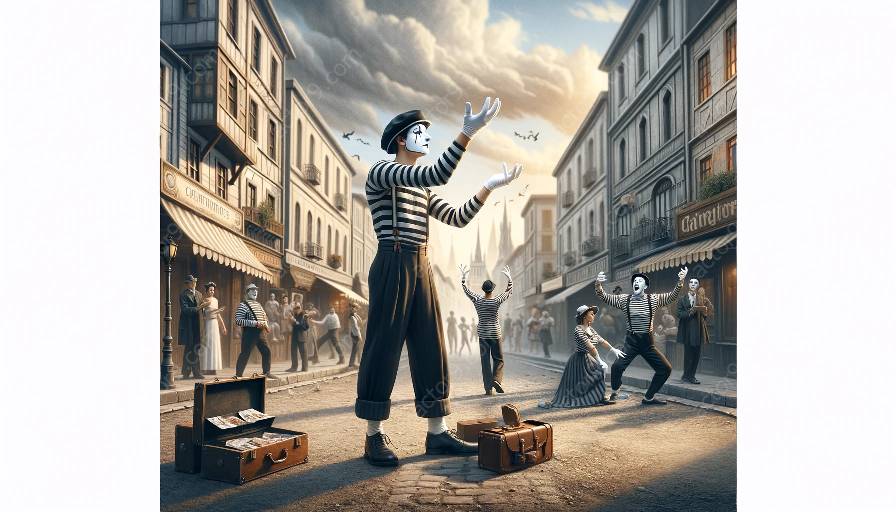When it comes to the art of mime, expressive facial gestures play a crucial role in conveying emotions and storytelling. This topic cluster will delve into the significance of facial expressions in mime, how they relate to body language, and their connection to physical comedy.
Understanding Expressive Facial Gestures
Mime artists rely on their facial expressions to communicate a wide range of emotions and actions. By using subtle movements of the eyebrows, eyes, mouth, and cheeks, they can convey happiness, sadness, surprise, and a myriad of other feelings without uttering a single word.
The Relationship Between Body Language and Facial Gestures
Facial gestures in mime are interconnected with body language, as they work together to create a cohesive narrative. The alignment of facial expressions with specific body movements enhances the audience's understanding of the storyline and emotions being portrayed. For example, a drooping posture combined with a frown can effectively depict a character's dejection or despair.
Expressive Facial Gestures in Mime and Physical Comedy
Physical comedy often relies on exaggerated facial expressions to elicit laughter and convey comedic situations. Mime artists master the art of using their faces to emphasize humorous moments, making the audience burst into laughter through cleverly timed and exaggerated expressions.
Practicing and Perfecting Facial Gestures
To excel in mime, artists must dedicate ample time to honing their facial expressions. This involves analyzing and perfecting the subtleties of each movement and understanding how to effectively utilize their entire face as a canvas for communication.
Concluding Thoughts
The world of expressive facial gestures in mime offers a rich tapestry of emotions, storytelling, and humor. By mastering the art of facial expression, mime artists bring characters and narratives to life, captivating audiences with their eloquent non-verbal communication.


























